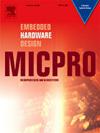基于人工智能的智能手杖系统,为盲人和视障人士提供安全和隐私功能
IF 2.6
4区 计算机科学
Q3 COMPUTER SCIENCE, HARDWARE & ARCHITECTURE
引用次数: 0
摘要
环境辅助生活(AAL)技术旨在提高残疾人的生活质量。实用性、可靠性、自主性、易用性、安全性和低成本是最重要的,在某些情况下被研究界忽略或忽视。本文针对这些需求,提出了一种基于人工智能的盲人和视障人士安全隐私智能手杖系统。实现了多种便利室内和室外日常生活的服务:通过超声波(US)传感器和振动对地面和头部进行障碍物检测,通过计算机视觉对上下楼梯进行检测/识别,通过各种传感器进行图像处理,用于额外安全的紧急按钮,以及具有安全和隐私机制的LoRa天线,用于与基于Health 4.0的环境进行安全通信。该系统采用Arduino和Raspberry Pi Zero的组合实现,与其他已发表的相关作品相比,该系统提供了更实用、更经济的服务,包括头位检测、室内外调节开关和安全机制,这些在大多数情况下都被忽略了。与已发表的作品相比,它在一般障碍物检测方面的准确率提高了7.4%,并且在跌落或墙壁检测方面的准确率达到了100%。与已发表的作品相比,该系统的速度调整召回率提高了37.82%,楼梯检测功能的性能提高了24.4%。它专注于硬件效率、安全性和具有成本效益替代方案的现实世界自主性。所提出的安全机制架构实现了较小的面积消耗,与已发表的设计相比至少减少了35.6%,并且具有与所使用的天线相适应的高效吞吐量。本文章由计算机程序翻译,如有差异,请以英文原文为准。
AAL-based smart cane system with security and privacy features for blind and visually impaired individuals
Ambient Assisted Living (AAL) technologies aim at increasing the quality of life for people with impairments. Practicality, reliability, autonomy, ease-of-use, safety, and low cost are of the utmost importance and in some cases omitted or overlooked by the research community. In this paper, an AAL-based smart cane system with security and privacy features for blind and visually impaired individuals that aims at satisfying these requirements is proposed. Multiple services that facilitate the everyday life for both indoor and outdoor activities are implemented: obstacle detection for ground and head level via ultrasonic (US) sensors and vibrations, ascending and descending stair detection/recognition via computer vision, image processing through various sensors, an emergency button for additional safety, and a LoRa antenna with a security and privacy mechanism for safely communicating with the Health 4.0-based environment. The proposed system is implemented with an Arduino and Raspberry Pi Zero combination and provides more practical and economic services compared to other published related works, including head-level detection, an indoor-outdoor adjustment switch and security mechanisms that are in most cases dismissed. It achieves a 7.4 % accuracy increase for general obstacle detection and a 100 % consistent drop or wall detection accuracy compared to published works. The proposed system presents a 37.82 % increase of speed-adjusted recall and a 24.4 % performance increase in its stair detection feature compared to published works. It focuses on hardware efficiency, safety and real-world autonomy with cost efficient alternatives. The proposed architecture of the security mechanism achieves a small area consumption, minimum of 35.6 % decrease compared to published designs, and an efficient throughput, that is appropriate with the utilized antenna.
求助全文
通过发布文献求助,成功后即可免费获取论文全文。
去求助
来源期刊

Microprocessors and Microsystems
工程技术-工程:电子与电气
CiteScore
6.90
自引率
3.80%
发文量
204
审稿时长
172 days
期刊介绍:
Microprocessors and Microsystems: Embedded Hardware Design (MICPRO) is a journal covering all design and architectural aspects related to embedded systems hardware. This includes different embedded system hardware platforms ranging from custom hardware via reconfigurable systems and application specific processors to general purpose embedded processors. Special emphasis is put on novel complex embedded architectures, such as systems on chip (SoC), systems on a programmable/reconfigurable chip (SoPC) and multi-processor systems on a chip (MPSoC), as well as, their memory and communication methods and structures, such as network-on-chip (NoC).
Design automation of such systems including methodologies, techniques, flows and tools for their design, as well as, novel designs of hardware components fall within the scope of this journal. Novel cyber-physical applications that use embedded systems are also central in this journal. While software is not in the main focus of this journal, methods of hardware/software co-design, as well as, application restructuring and mapping to embedded hardware platforms, that consider interplay between software and hardware components with emphasis on hardware, are also in the journal scope.
 求助内容:
求助内容: 应助结果提醒方式:
应助结果提醒方式:


